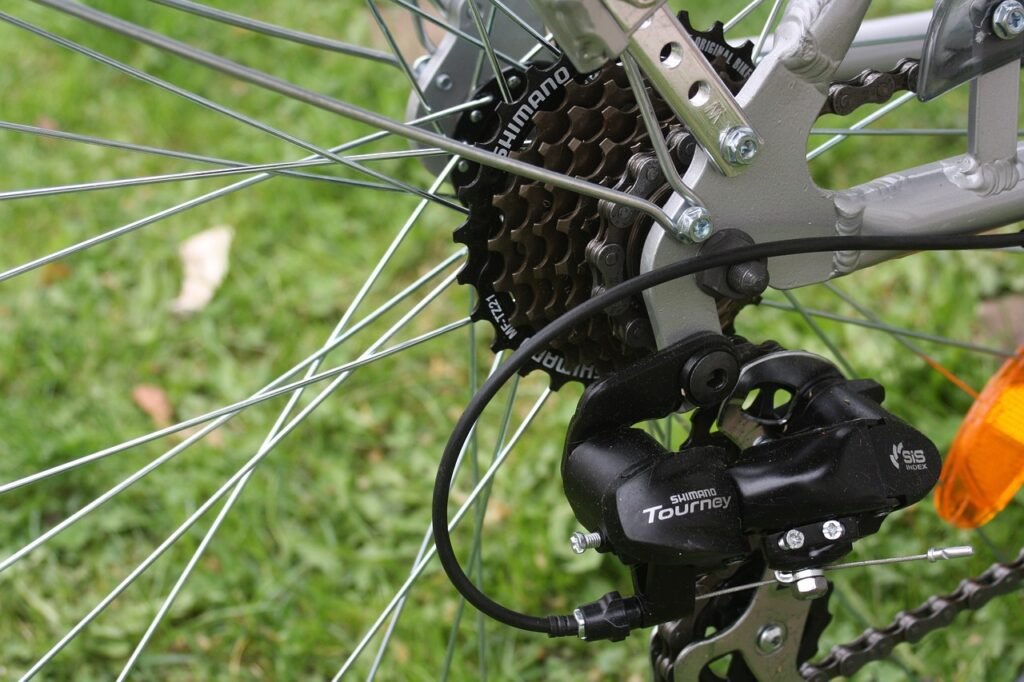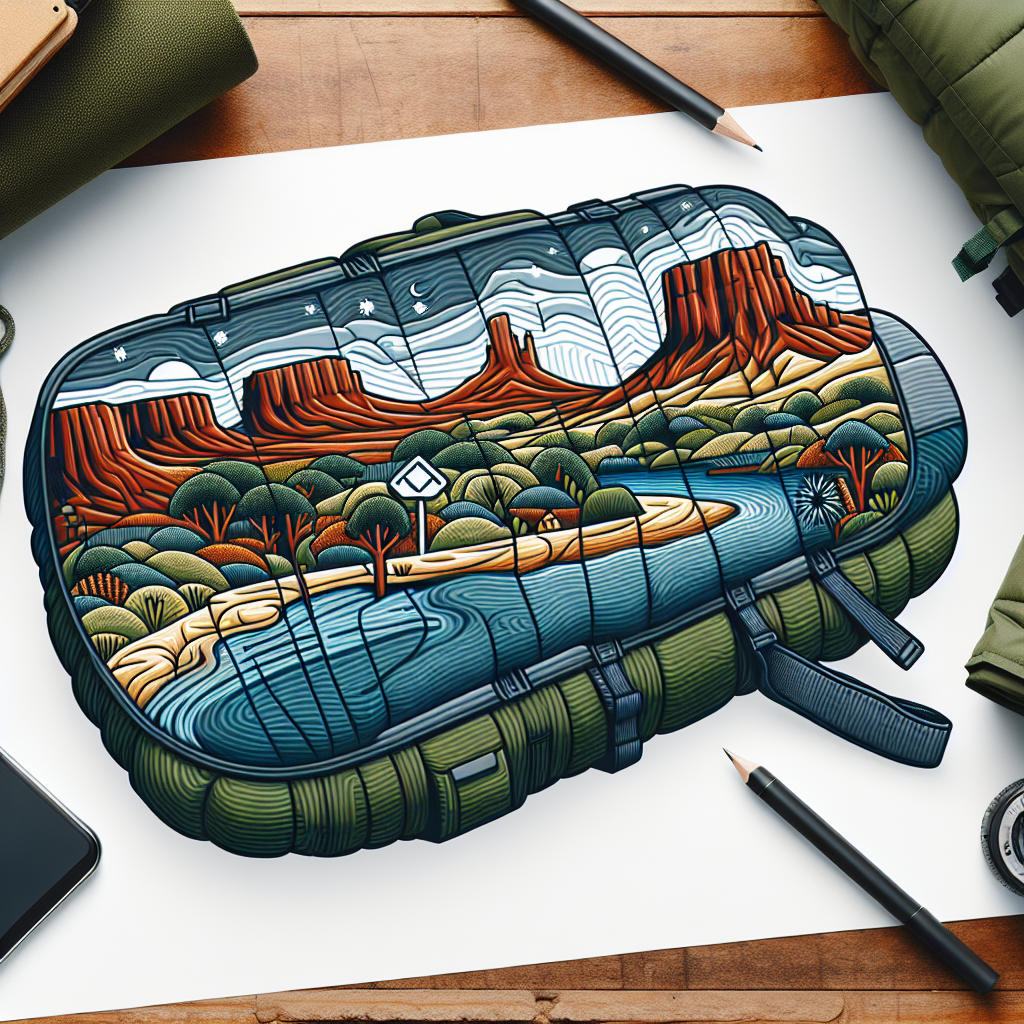

When it comes to choosing the perfect sleeping bag for your Australian adventures, there are a few essential factors to consider. From the soaring temperatures of the Outback to the chillier nights in the mountains, the diverse climate and terrain of Australia present unique challenges for finding the right sleeping bag. This article will explore key features to look for, such as insulation, temperature ratings, and weight, that will help you make an informed decision and ensure a comfortable night’s sleep no matter where you decide to pitch your tent Down Under. So, whether you’re planning a rugged backpacking trip or a relaxing camping getaway, read on to discover how to choose the perfect sleeping bag for your Australian escapades.


Insulation Type
When it comes to choosing the right sleeping bag for Australian conditions, one of the first things you need to consider is the insulation type. There are two main types of insulation available: down and synthetic.
Down
Down insulation is known for its excellent warmth-to-weight ratio and is highly compressible, making it a popular choice for backpackers and hikers. It is made from the soft feathers found under the outer feathers of ducks and geese. Down sleeping bags are lightweight, packable, and provide superior insulation, keeping you warm in cold temperatures. They also offer excellent breathability, so you won’t feel suffocated in warmer conditions.
Synthetic
On the other hand, synthetic insulation is made from man-made fibers such as polyester. Synthetic sleeping bags are generally more affordable than down sleeping bags and offer better insulation when wet, making them suitable for humid or damp conditions. They are also hypoallergenic, making them a great choice for people with allergies. Synthetic sleeping bags are easier to clean and maintain, as they can be machine washed and do not lose their insulation properties when wet. However, they tend to be bulkier and heavier than down sleeping bags.
Temperature Rating
Another important factor to consider when choosing a sleeping bag for Australian conditions is its temperature rating. Sleeping bags are usually assigned a temperature rating to help you determine their suitability for different weather conditions.
Season Rating
Season ratings indicate the range of temperatures in which the sleeping bag will keep you comfortably warm. Common season ratings include 1, 2, 3, and 4 seasons. A 1-season sleeping bag is designed for warmer conditions, while a 4-season sleeping bag is suitable for cold winter nights.
Extreme Rating
Extreme ratings indicate the lowest temperature at which the sleeping bag can keep you alive in an emergency, but it may not provide optimal comfort. It is important to note that extreme ratings should be taken with caution and should not be relied upon solely.
Comfort Rating
The comfort rating is the temperature at which an average person will feel comfortable in the sleeping bag. It is important to choose a sleeping bag with a comfort rating suitable for the expected temperature range of your camping trip.
Shape and Size
The shape and size of a sleeping bag can greatly impact your comfort and overall camping experience. Here are some common sleeping bag shapes and sizes to consider:
Mummy
Mummy-shaped sleeping bags are tapered towards the feet, resembling the shape of a mummy. This shape minimizes the amount of air inside the bag, helping to retain heat and provide better insulation. Mummy bags are lightweight, packable, and ideal for chilly nights.
Rectangular
Rectangular-shaped sleeping bags provide more room to move around, making them more suitable for people who prefer to stretch out or move their legs during sleep. However, the extra space in rectangular bags can lead to more heat loss, making them less suitable for colder conditions.
Semi-Rectangular
Semi-rectangular sleeping bags offer a compromise between the mummy and rectangular shapes. They provide more room compared to mummy bags, while still retaining some of the heat-trapping characteristics of a tapered shape. Semi-rectangular bags are generally suitable for mild to moderate temperatures.
Size and Length
When choosing a sleeping bag, it’s important to consider the size and length that will fit you comfortably. Most sleeping bags come in standard sizes, such as regular or long, which correspond to different height ranges. It’s also worth considering the width of the sleeping bag if you prefer a bit more room to move around or if you have broader shoulders.
Weight and Packability
If you’re planning on backpacking or hiking in Australia, the weight and packability of your sleeping bag are crucial factors to consider. Here’s what you need to know:
Weight
The weight of a sleeping bag can vary significantly depending on the insulation type, size, and additional features. Down sleeping bags are generally lighter than synthetic sleeping bags, making them a popular choice for backpackers who prioritize weight savings. However, if you’re not planning on carrying your sleeping bag for long distances, the weight may not be as important to you.
Packability
Packability refers to how well a sleeping bag can be compressed and packed into a smaller size. Down sleeping bags are known for their superior packability due to the nature of down insulation, which can be compressed to a much smaller size compared to synthetic insulation. If you need to save space in your backpack or have limited storage at home, a highly packable sleeping bag can be a great choice.


Water Resistance
In Australia, the weather can be unpredictable, and you never know when you might encounter rain or moisture during your camping trip. Having a water-resistant sleeping bag can be a lifesaver. Consider the following factors when evaluating the water resistance of a sleeping bag:
Outer Shell Material
The outer shell material plays a significant role in the water resistance of a sleeping bag. Look for sleeping bags with shells made from waterproof or water-resistant fabrics such as ripstop nylon or polyester. These materials are designed to repel moisture and provide an additional barrier against rain or dew.
DWR Treatment
Durable Water Repellent (DWR) treatment is a chemical coating applied to the outer fabric of a sleeping bag to enhance its water resistance. It helps the fabric shed water droplets instead of absorbing them. DWR-treated sleeping bags are a great option for camping in wet or humid conditions, as they provide an extra layer of protection against moisture.
Ventilation
Proper ventilation is essential to regulate temperature and prevent condensation buildup inside your sleeping bag. Consider the following factors for optimal ventilation:
Zipper Position
Sleeping bags often feature zippers that allow you to open and close the bag. Zipper placement can affect the amount of ventilation you have. Bags with full-length zippers provide the most ventilation options, as they can be completely opened for increased airflow. However, keep in mind that opening the bag too much can result in heat loss, so choose a bag with a zipper placement that suits the expected temperature range.
Integrated Ventilation
Some sleeping bags come with integrated ventilation features such as mesh panels or vents. These features enhance airflow while maintaining insulation. Look for bags with strategically placed ventilation options to ensure optimal comfort during varying weather conditions.


Price Range
Sleeping bags come in a wide range of prices, so it’s important to consider your budget. Here’s a breakdown of different price ranges:
Budget
Budget sleeping bags are typically more affordable and suitable for occasional or entry-level campers. While they may lack some of the advanced features found in higher-end options, budget sleeping bags can still provide adequate insulation and comfort for most camping trips.
Mid-Range
Mid-range sleeping bags offer a balance between affordability and quality. They often feature a combination of synthetic and down insulation, providing a good compromise between weight, warmth, and price. Mid-range sleeping bags are ideal for frequent campers who want a reliable and durable option without breaking the bank.
High-End
High-end sleeping bags are designed for extreme conditions and serious outdoor enthusiasts. They often have premium features such as high-fill power down insulation, advanced moisture-wicking fabrics, and innovative design elements. While high-end sleeping bags can be quite expensive, they provide top-notch performance, durability, and comfort for those who demand the best.
Durability
A sleeping bag is an investment, so you want to ensure it will last for many camping trips to come. Consider the following factors when evaluating the durability of a sleeping bag:
Materials
The materials used in the construction of a sleeping bag play a significant role in its durability. Look for sleeping bags made from high-quality, ripstop fabrics that can withstand rough handling, abrasion, and prolonged use. Reinforced stitching and durable zippers are also important features to consider.
Construction
Pay attention to the construction of the sleeping bag, including the insulation distribution and the quality of baffles or quilting. A well-constructed sleeping bag will ensure the insulation stays in place, preventing cold spots and maximizing warmth. Quality construction techniques, such as box baffles or quilted baffles, can also enhance the overall performance and durability of the sleeping bag.


Additional Features
While insulation, temperature rating, and durability are essential factors, there are additional features that can enhance your sleeping bag experience:
Hood
A hood is designed to provide additional insulation and keep your head warm during cold nights. Look for sleeping bags with adjustable hoods that can be tightened to trap heat or loosened for extra ventilation.
Draft Tubes
Draft tubes are filled with insulation and are located along the zipper to prevent cold air from seeping in. They provide added insulation and help maintain a consistent temperature inside the sleeping bag. Look for multiple draft tubes for maximum heat retention.
Pockets
Some sleeping bags feature built-in pockets that allow you to conveniently store small items such as a phone, flashlight, or snacks within reach while you sleep. Pockets can be useful for keeping essential items close at hand without causing discomfort.
Sleeping Bag Liners
Sleeping bag liners are thin sheets that can be used inside your sleeping bag to add another layer of insulation, protection, and comfort. They are particularly useful in hot and humid conditions when you want to sleep directly on the liner rather than inside the sleeping bag. Liners are also easy to clean and can extend the life of your sleeping bag.
Brand and Reviews
When it comes to investing in a sleeping bag, it’s important to choose a reputable brand known for producing quality outdoor gear. Consider the following factors when looking for a reliable sleeping bag brand:
Reputable Brands
Research and choose brands that have a long-standing reputation for producing high-quality sleeping bags. Look for brands with positive customer reviews, strong warranties, and a commitment to sustainable and ethical manufacturing practices. Some top-rated sleeping bag brands include The North Face, Marmot, Western Mountaineering, Sea to Summit, and Big Agnes.
Read Reviews
Before making a final decision, take the time to read reviews from other campers and outdoor enthusiasts. Online platforms and forums can provide valuable insights into the performance, durability, and overall satisfaction of a particular sleeping bag model. Pay attention to reviews from users who have similar camping experiences or conditions to ensure the information is relevant to your needs.
Remember, choosing the right sleeping bag for Australian conditions is essential for a comfortable and enjoyable camping experience. Consider the insulation type, temperature rating, shape and size, weight and packability, water resistance, ventilation, price range, durability, additional features, and reputable brands when selecting your sleeping bag. With careful consideration and research, you can find the perfect sleeping bag that meets all your camping needs and keeps you cozy throughout your Australian adventures.


Leave a Reply